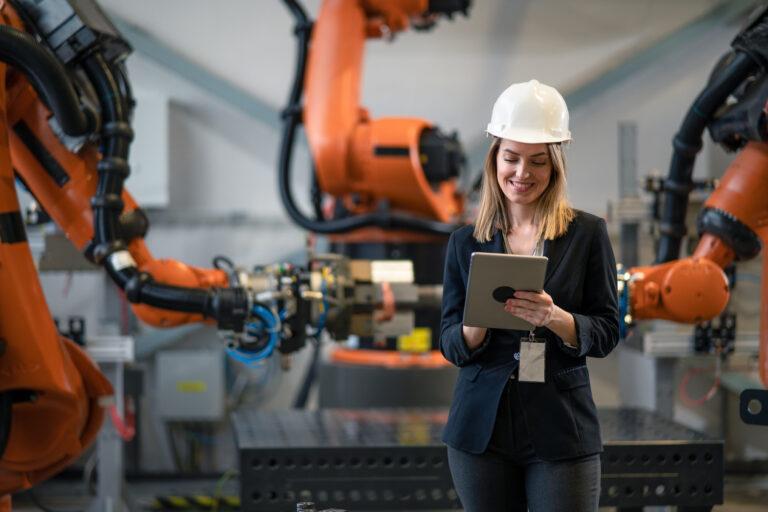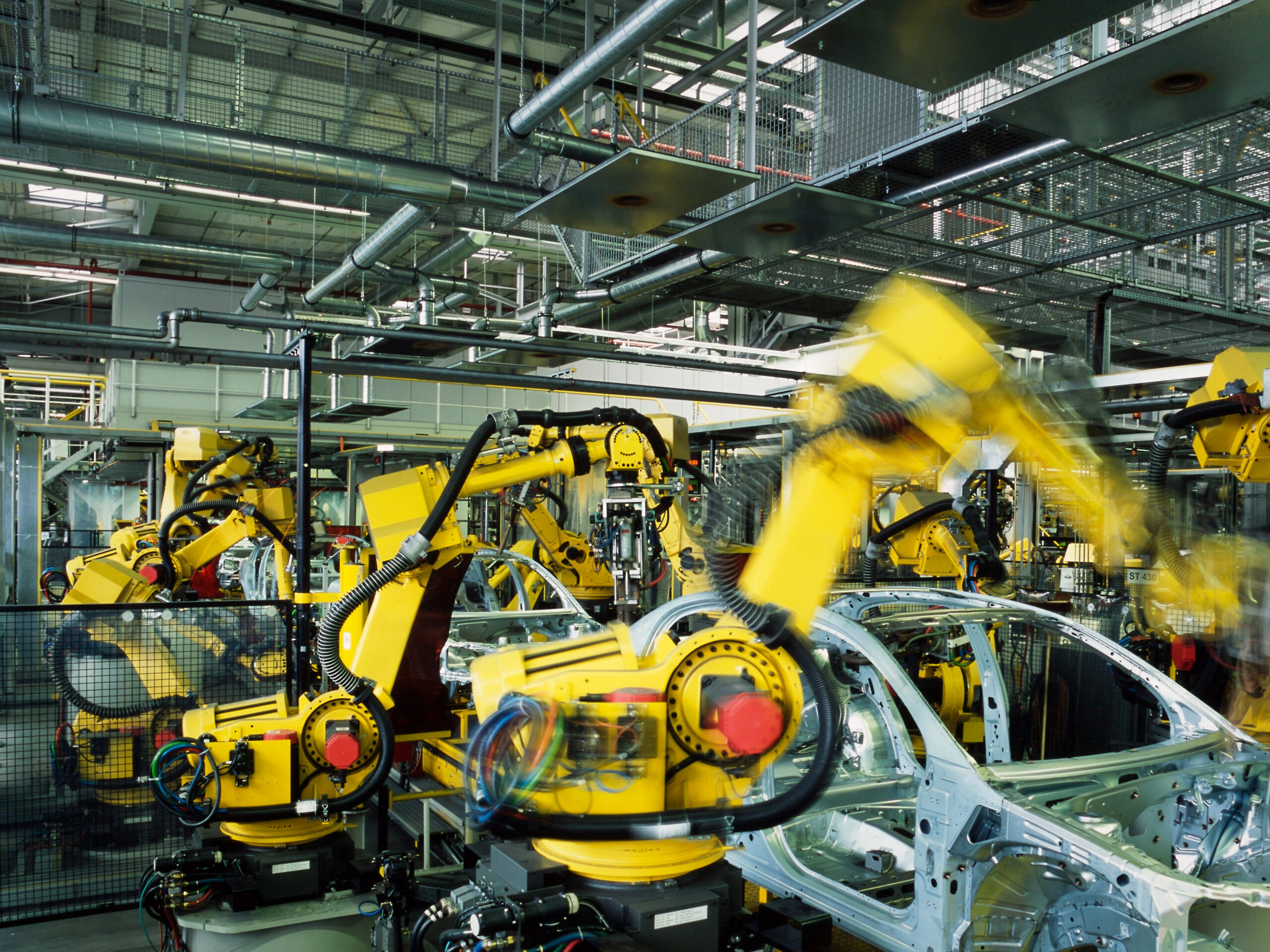Robotic grippers are essential tools in automation, allowing machines to pick up and move objects. There are many types of grippers, each designed for specific tasks. This guide explores the different types of grippers, including pneumatic, vacuum, hydraulic, and electric grippers, and highlights why Ubiros’ electric grippers stand out as the best choice for precision and efficiency.
Pneumatic Grippers
Pneumatic grippers use compressed air to grab objects. They are fast and work well in high-speed applications. These grippers require compressed air, making them familiar in industries where speed and efficiency are key.
However, pneumatic grippers require higher maintenance than others because air leaks and wear on moving parts can impact performance. They are best for applications where precision is less critical and rapid actuation is necessary.
Vacuum Grippers
Vacuum grippers use suction to lift objects. They rely on atmospheric pressure and a vacuum to generate a stronghold. A vacuum pump creates the suction required for lifting.
These grippers are great for handling delicate, flat objects like glass, cardboard, and metal sheets. However, they do not work well with rough or porous surfaces, and their effectiveness depends on air pressure and surface conditions.
Hydraulic Grippers
Hydraulic grippers are robotic arm grippers known for their grip force and are ideal for heavy-duty applications. Instead of compressed air, they use fluid pressure to create strong gripping power. These grippers are commonly found in industries that require lifting large, heavy objects.
While hydraulic grippers provide superior strength, they also demand more maintenance and can be bulky. They are less suited for operating in tight spaces or delicate tasks that require precision.
Electric Grippers – The Future of Automation
Electric grippers have become a top choice in modern automation because of their precision, flexibility, and low maintenance. Unlike pneumatic or hydraulic grippers that depend on compressed air or fluid, electric grippers use motors to control the gripping process efficiently.
One of their biggest advantages is the ability to fine-tune grip force, which is crucial for handling delicate or fragile items. This precision prevents damage while ensuring a secure hold. Built-in feedback systems continuously monitor the gripping force, making real-time adjustments as needed.
Beyond grip force, electric grippers also provide position control, allowing them to grasp objects and place them accurately in a workspace. This feature is essential in automated assembly lines, where precise placement ensures proper alignment and functionality. Improved positioning capabilities streamline automation, reduce errors, and boost productivity.
Another major benefit is adaptability. Electric grippers can be programmed and adjusted to handle a variety of objects, making them ideal for industries with frequently changing production needs. Whether it’s electronics, food handling, or automotive assembly, they offer a flexible solution without extensive retooling.
Maintenance is another area where electric grippers excel. Without reliance on air or fluid systems, they have fewer components prone to wear and require less servicing. This reduces downtime and operational costs, making them a cost-effective investment.
With precise force control, efficient positioning, and minimal maintenance, electric grippers continue to shape the future of automation. Their ability to handle diverse applications makes them a valuable asset in industries seeking reliable and adaptable robotic solutions.
Types of Electric Grippers
- Two-Finger Parallel Grippers – These grippers provide precise control, making them suitable for applications requiring handling single part types or a mix of mixed items.
- Three-Finger Grippers – These allow for better force distribution and work well with round or irregularly shaped objects.
- Adaptive Soft Grippers – These are highly flexible and can handle fragile or oddly shaped objects, ideal for food, cosmetics, and pharmaceutical industries.
Why Choose Ubiros Electric Grippers?
Ubiros specializes in fully electrically actuated soft robotic grippers, setting them apart from traditional options. Unlike pneumatic grippers, which require an external air supply, or hydraulic grippers, which are bulky and high-maintenance, Ubiros’ electric grippers are:
- Shape- and size-adaptive, capable of gripping a single item or a mix with precision.
- Cost-effective, reducing the need for additional infrastructure like compressors or vacuum pumps.
- Lightweight, allowing for high speeds in automation without adding excessive load to robotic arms.
- Highly precise, with the ability to vary gripping force to handle delicate or firm objects.
- Low maintenance, offering a long lifespan compared to pneumatic and hydraulic alternatives.
Ubiros’ electric grippers provide force and position control, enabling them to perform better than many traditional options. Their design allows them to operate in tight spaces, making them perfect for industries requiring precise object manipulation.
How to Choose the Right Gripper
The best gripper depends on the task at hand. Consider these factors:
- Speed: Pneumatic grippers are best for high-speed operations.
- Delicate Handling: Vacuum grippers are great for fragile items.
- Heavy-Duty: Hydraulic grippers excel in heavy-duty applications.
- Precision and Efficiency: Electric grippers, especially those from Ubiros, provide the best control and flexibility.
Understanding the different types of grippers is key to selecting the right tool for automation. Pneumatic grippers are best for high-speed tasks, vacuum grippers excel with fragile items, hydraulic grippers handle heavy-duty applications, and electric grippers, particularly Ubiros’ solutions, offer the most precise and adaptable handling.
When choosing a gripper, consider grip force, speed, maintenance, and flexibility. Ubiros’ fully electric soft grippers stand out as an innovative, low-maintenance, and highly efficient option, making them ideal for industries looking for reliable, precise automation solutions.


